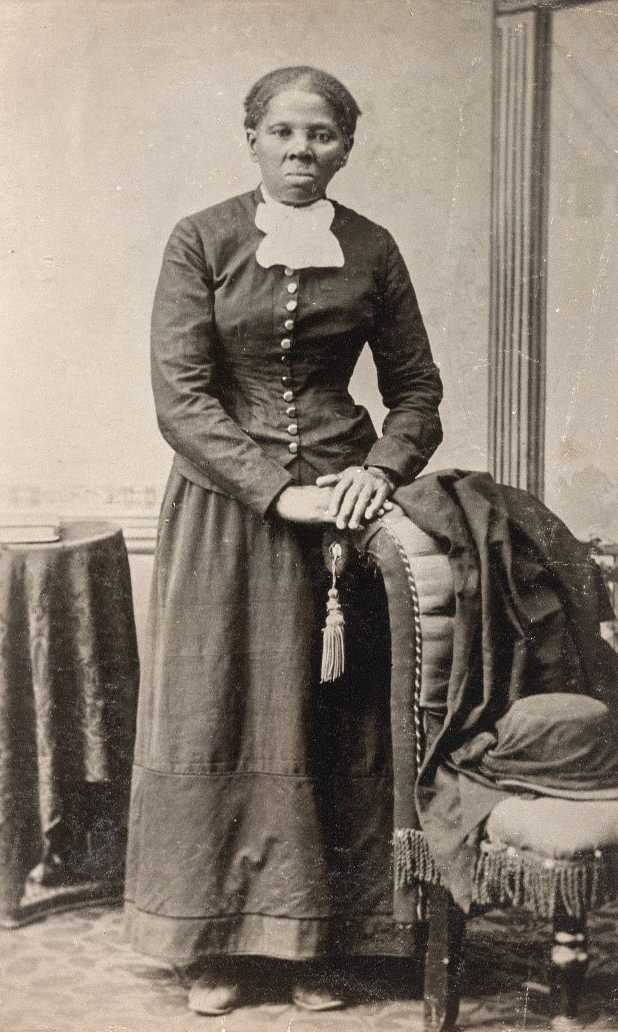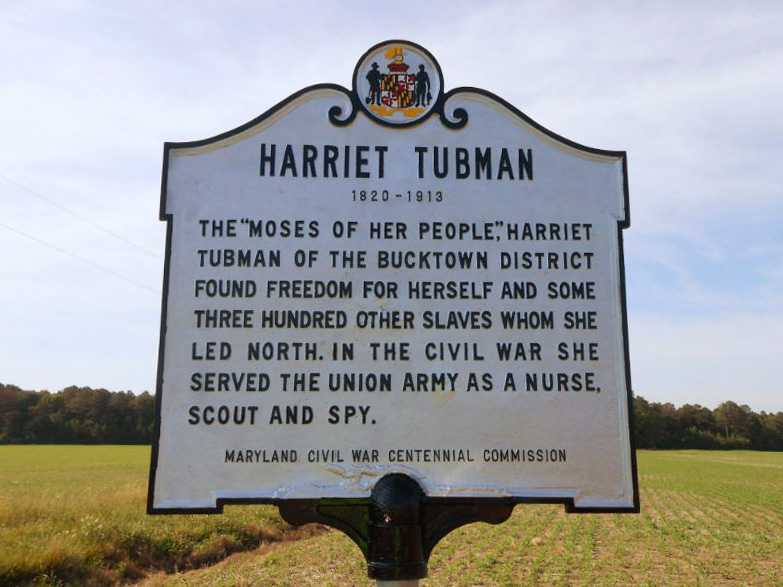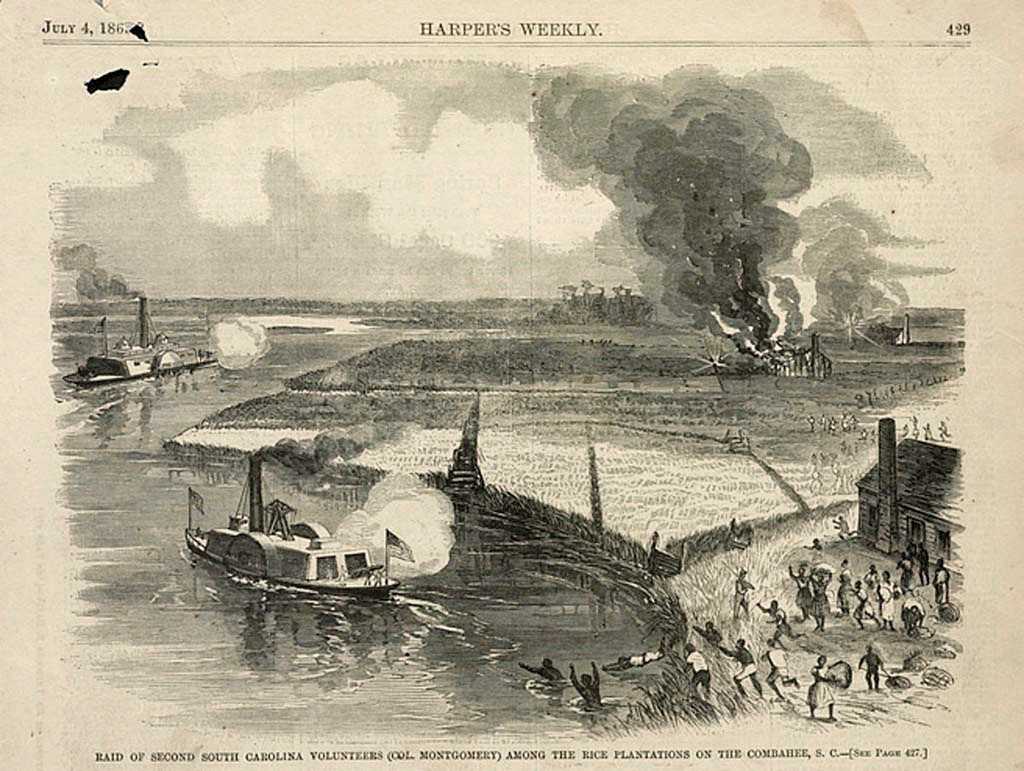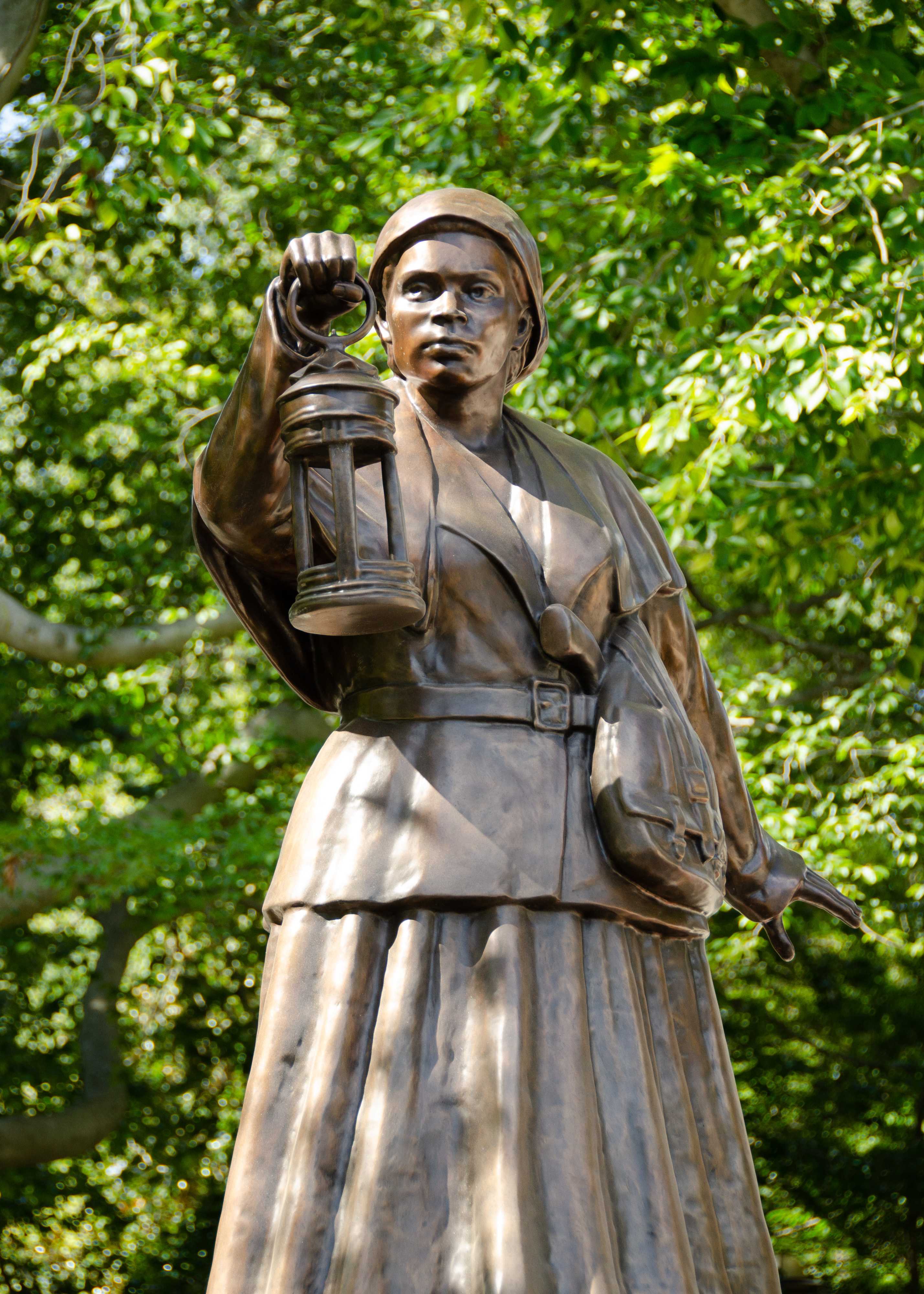
Official portrait of Harriet Tubman (circa 1822-1913)
The Agency recently unveiled a new bronze statue at CIA Headquarters to commemorate Harriet Tubman.
Tubman, often referred to by her contemporaries as the Biblical namesake “Moses,” has long been celebrated as one of the iconic conductors of the Underground Railroad. She was a freed slave who risked her life countless times to smuggle other slaves to the north in the years before the Civil War.
What many do not know is that during the Civil War, Harriet Tubman was a spy helping to gather vital intelligence for the Union Army.

The Harriet Tubman historical marker, Dorchester County, Maryland.
A Symbol of Freedom
Born enslaved in Dorchester County, Maryland in 1822, Tubman endured brutal living and working conditions. While still a young girl, she suffered a head injury when an overseer hit her with a two-pound weight while he was trying to prevent an enslaved man from escaping. Despite the long-term effects of that injury, Tubman was determined that slavery would not define her and sought a better life rooted in freedom for herself and others.
In 1849, Tubman escaped and made the dangerous trek from Maryland to Philadelphia, Pennsylvania. After securing her freedom, Tubman continued risking her life by returning to Maryland to free family members and guide other enslaved people to freedom. Under the additional threat of the Fugitive Slave Act of 1850, and facing perilous conditions, Tubman, working alongside the Underground Railroad, applied sophisticated tradecraft including the use of disguises, clandestine communication, and assets and allies, who provided safe houses, transportation, and funding for the operations. Tubman returned to the Eastern Shore of Maryland on 13 different expeditions to help nearly a hundred enslaved men and women make the journey north to avoid capture.
Years later, on a speaking tour, Tubman told an audience: “I was a conductor of the Underground Railroad for eight years, and I can say what most conductors can’t say—I never ran my train off the track and I never lost a passenger.”
An Intelligence Pioneer
By the beginning of the Civil War in 1861, Tubman already had years of experience leading clandestine operations between the south and north, and she believed a Union victory was the key step towards abolishing slavery. Tubman’s reputation for her work with the Underground Railroad spread throughout the north and abolitionist Frederick Douglass wrote about her with glowing praise.
Shortly after the Civil War began, Governor John A. Andrew of Massachusetts recruited Tubman to work for the Union Army. She was assigned to Major General David Hunter, who was in charge of the Union activities in South Carolina, Georgia, and Florida.
Tubman received official documents and funds to travel with the Union Army as a nurse. Although she did perform nursing duties as she visited different hospital camps, she also worked with the Union Army to recruit spies, scout waterways along the coast, and report valuable intelligence to Union officials, while at the same time helping enslaved locals flee to freedom. Tubman supported the Union Army’s intelligence by using the tradecraft she learned as an operator on the Underground Railroad.

A drawing from Harper’s Weekly illustrating the Combahee River Raid. Published July 4, 1863.
On June 2, 1863, Tubman helped lead 150 African-American Union soldiers in the Combahee River Raid.
On the night of June 1, three federal gunboats sailed from Beaufort, South Carolina traveling up the Combahee River. Tubman had gained intelligence on the location of Confederate torpedoes planted along the river, which enabled the Union ships to steer away from danger. As the ships continued up the river, Union troops—many of whom were formerly enslaved—convinced hundreds of enslaved men, women, and children to board their boats. A small company of Confederate troops tried, but failed, to stop the raid.
Thanks to the intelligence that Tubman provided, more than 750 enslaved men and women escaped unharmed, many of whom later joined the Union cause. Today, historians consider the Combahee River Raid to be a major intelligence and military success.

Her Legacy
Tubman was a born fighter and visionary. In her post-Civil War years, she lectured around the country supporting African-American rights and became a major player in the Women’s Suffrage movement. Tubman passed away in 1913. Her life story and her work for social equality continues to inspire generations of people in books, museums, and movies. Soon, Tubman will be featured on the U.S. twenty-dollar bill.
The new Harriet Tubman statue at CIA Headquarters in Langley, Virginia will be an inspiration to Agency officers for years to come.
“I had reasoned this out in my mind. There was one of two things I had a right to, Liberty or death. If I could not have one I would have the other.” Harriet Tubman circa 1869
